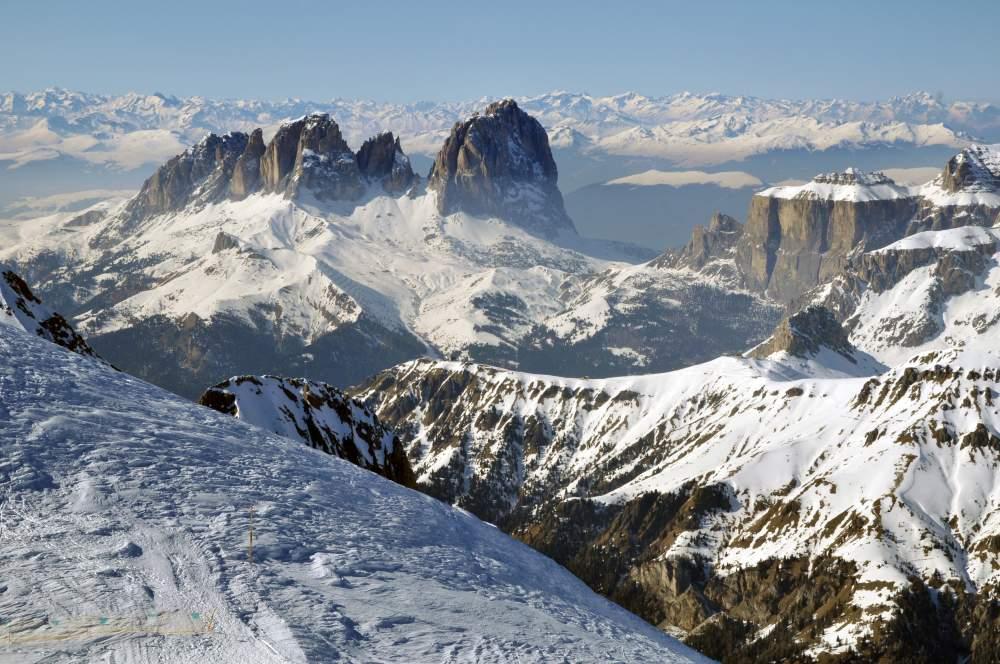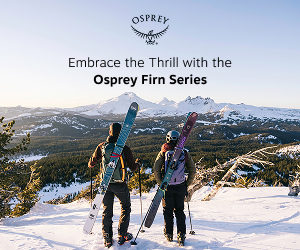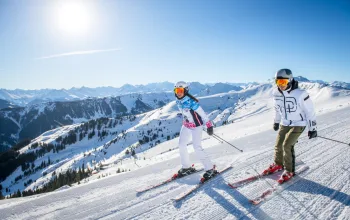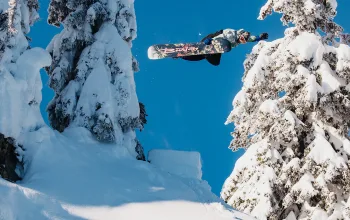They do things differently in Italy – and that goes for its ski resorts too. Forget that urge to be the first on the lift. Instead, make a lunch reservation at that beautiful mountain rifugio and cruise down the perfectly groomed pistes without having to worry about huge crowds of baying Brits.
Ski holidays in Italy tend to be cheaper than in France or Austria, and they're almost always cheaper than ski holidays in Switzerland. You can definitely still find cheaper accommodation and lift passes if you're prepared to go skiing in Eastern Europe, but among the major alpine nations, Italy is hard to beat on price.
"As a rule, ski holidays in Italy tend to be cheaper than in France or Austria"
The country is famously family friendly, and is home to many of Europe's best family-friendly ski resorts, and it's ideal anyone who is more interested in just enjoying the snow rather than skiing faster, further and steeper than the next person.
Having said that, if you're serious about freeriding there's plenty of that to be found in Italy's ski resorts too—indeed, Alagna features on our global list of the best resorts for powder skiing. Italy also has resorts that are ideally suited to beginners, resorts with short transfer times, and even some ski resorts that you can reach by train from the UK without too much faff.
But the ones we've listed here are more all-rounders—chosen because they tick a lot of boxes. These all offer a wide variety of pistes and terrain types, quality off-piste, decent après and, of course, excellent food—because, let's face it, that's a huge part of the reason for booking a ski holiday in Italy in the first place.
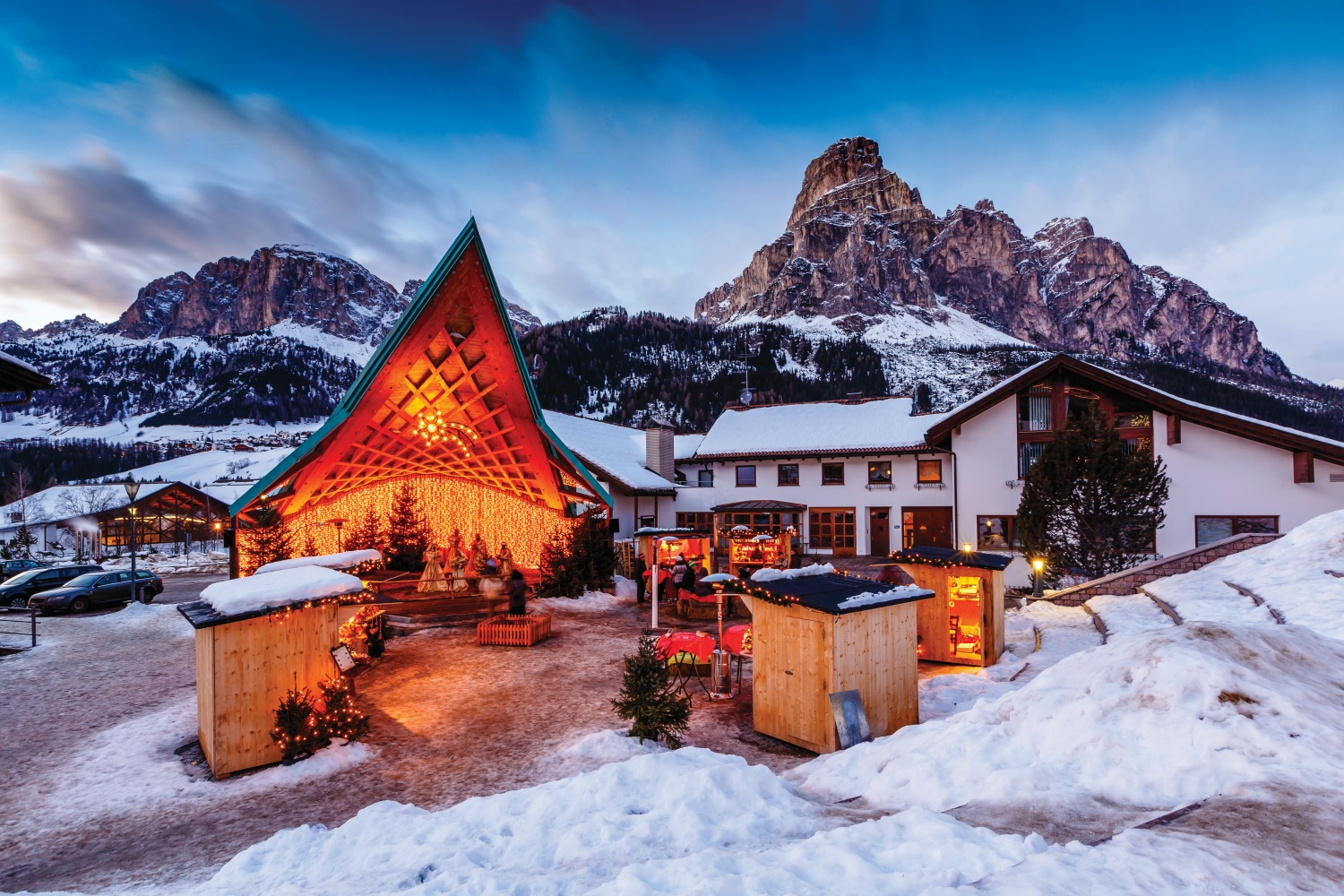
Alta Badia
Alta Badia lies at the north-eastern corner of the Sella massif, at the heart of the vast Dolomiti Superski area. The resort covers six villages, the biggest of which are Corvara, San Cassiano and La Villa. It has 130 km of its own runs, but makes a good base for exploring the Dolomiti Superski area.
Much of Alta Badia’s own skiing is on an undulating plateau and only the runs back down to the villages offer much of a test for good skiers. Experts will find one black run here – the Gran Risa World Cup descent to La Villa. As you'd expect with such a vast area, there is plenty of off-piste, including the Val Mezdis, known as the "Vallé Blanche of the Dolomites" and the 1,400 metre descent down the Val Setus. What it perhaps lacks in terms of steeps, Alta Badia more than makes up for in terms of scale.
When it comes to Italian food and wine, they don't come Alta Badia - which boasts that "no other valley in the Alps has such a density of highly decorated restaurants in such a small area," including two Michelin-starred restaurants with four stars between them. Even the mountain huts here offer gourmet food, with Rifugio Bioch a favourite. Start your après at Utia Club Moritzino, and go on from there.
Read our full ski resort review of Alta Badia here.
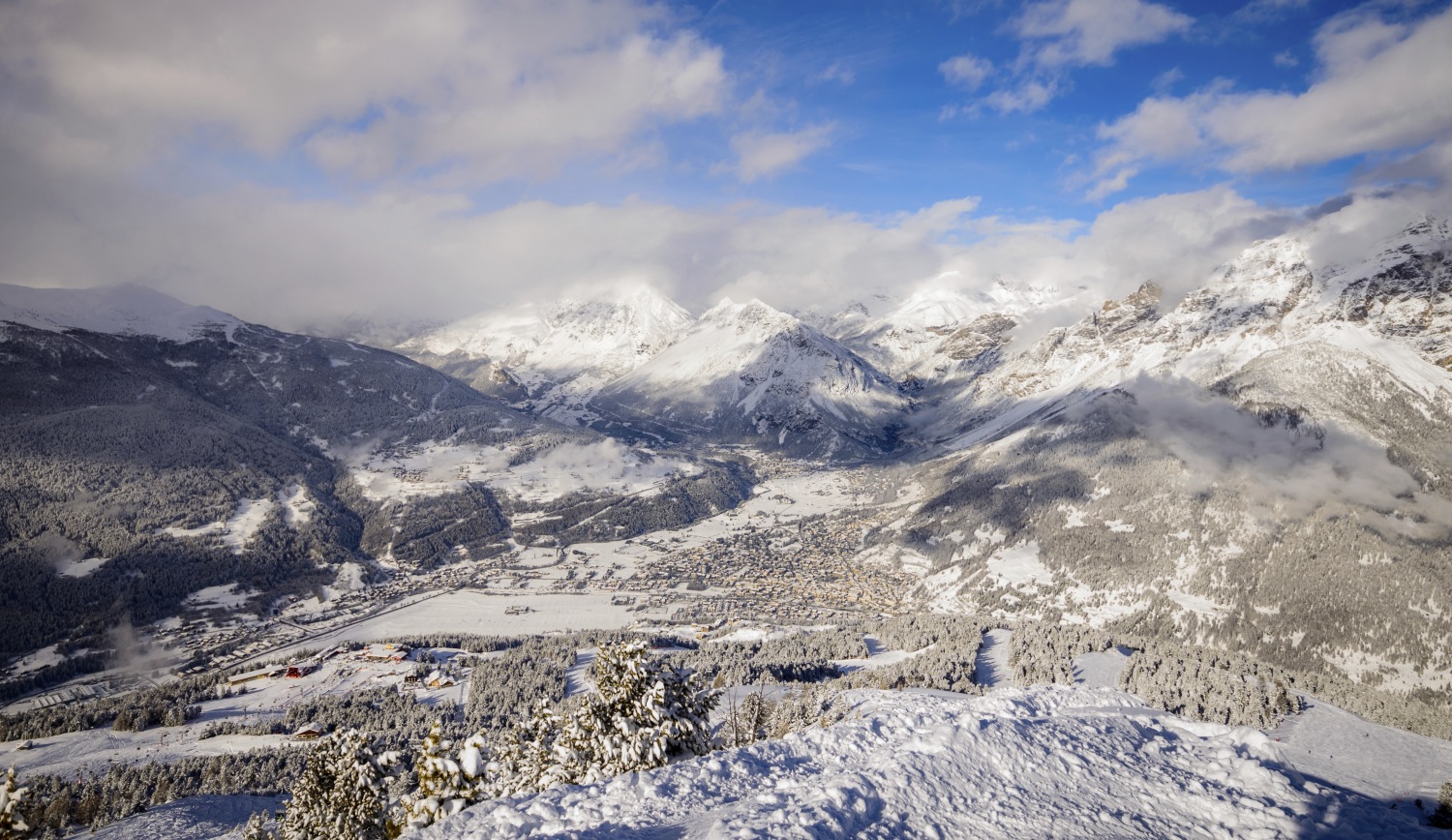
Bormio
A top destination for wellness as well as skiing, Bormio is an historic Lombardia spa town with bags of character and an uninterrupted summit-to-base run that delivers the greatest vertical drop of any ski resort anywhere in Italy—one of the reasons why it's been chosen to host the downhill events at the 2026 Milano-Cortina Winter Olympics.
Bormio’s main ski area is Vallecetta, on the slopes of Cima Bianca, rising from the southern end of town. At the mid-altitude Bormio 2000 hub area is a bustling plateau housing a couple of small slope-side hotels with welcoming café-bar/restaurant terraces; this level also has a beginners’ area and a number of ski-tows serving the surrounding tree-lined slopes, including a much cared for snowpark.
The majority of the slopes are red, including the tough Stelvio piste that hosts World Cup races. They're all entertaining enough for mid-level intermediates, but our absolute must-ski is the summit-to-base route with the biggest vertical drop in Italy – over a mile. Off-piste is restricted, but there are two designated freeride zones.
The separate small San Colombano ski area to the west of Bormio offers an additional few tree-lined red and blue runs. Off the slopes, Bormio town is one of Italy's prettiest ski resorts, with a charming old quarter filled with palatial buildings and peppered with piazzas, fountains, churches and chapels. There are three fabulous spas in and around the town, all fed by naturally hot mineral-rich springs.
Après ski is lively at the slope-side bars up at Bormio 2000 and at the base terminal BeWhite bar, while nightlife in Bormio town revolves around a handful of trendy bars, plus a couple of small nightclubs. Overall, Bormio offers skiers a compelling blend of the traditional town buzz, authentic Italian ambiance, beautiful scenery, and snow-sure slopes. A spot-on combination for discerning intermediates.
Read our full Bormio ski resort review here.
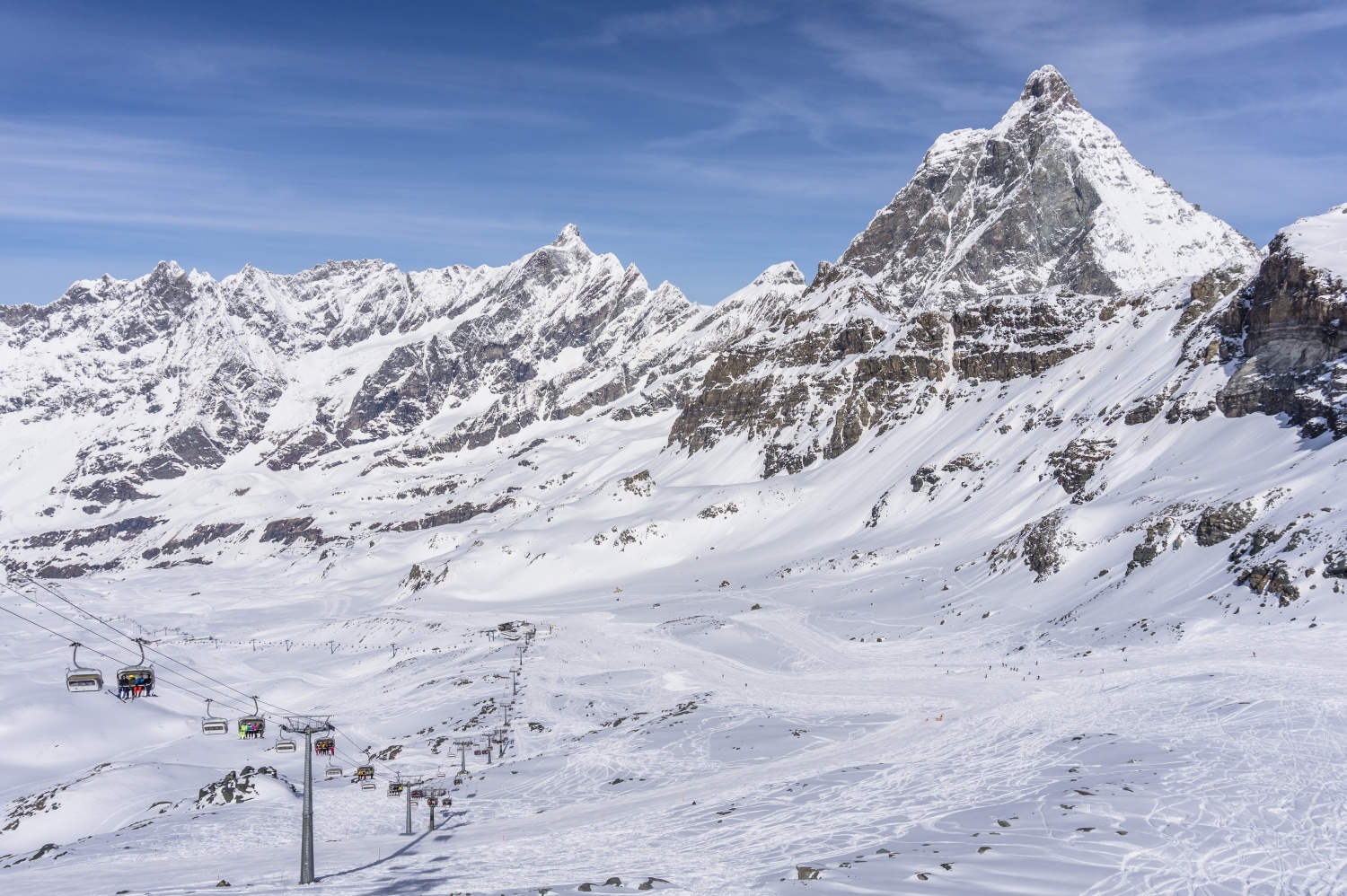
Cervinia
Sharing the Matterhorn massif with its Swiss neighbour Zermatt, Cervinia is home to the highest pisted ski area in Europe, which is reason enough for this to be on your shortlist of the best ski resorts in Italy.
If you’re a big-mileage cruiser who loves mountain landscapes, you’ll adore Cervinia. Surprisingly, given its rugged high-altitude location, Cervinia’s ski area mostly consists of easy to mid-range intermediate runs. The bulk of the slopes are all well above the tree line (some are at glacial heights). The ski area is split into two main sectors: one extending to the Theodulpass ridge that marks the Italian-Swiss border, the other a narrower sector that extends to the glacial Plateau Rosa, shared with Zermatt as the Matterhorn Glacier Paradise ski area.
Après ski in Cervinia is pub-based, and centred on the village; happy hours just after the lifts close are fun and quite animated, and you can ski to the terraces of a couple of bars in the base area – the stylish bar at the Hotel Principe delle Nevi gets our vote. A number of bars also offer free tapas-style snacks. The resort contains plenty of cosy café-bars, a plethora of good restaurants and some good upmarket hotels. If you want Zermatt quality skiing but don't have a Swiss bank account or a house you can happily remortgage to pay the crazy Zermatt prices, then Cervinia is the ski resort for you.
Read our full resort guide to Cervinia for all the details.
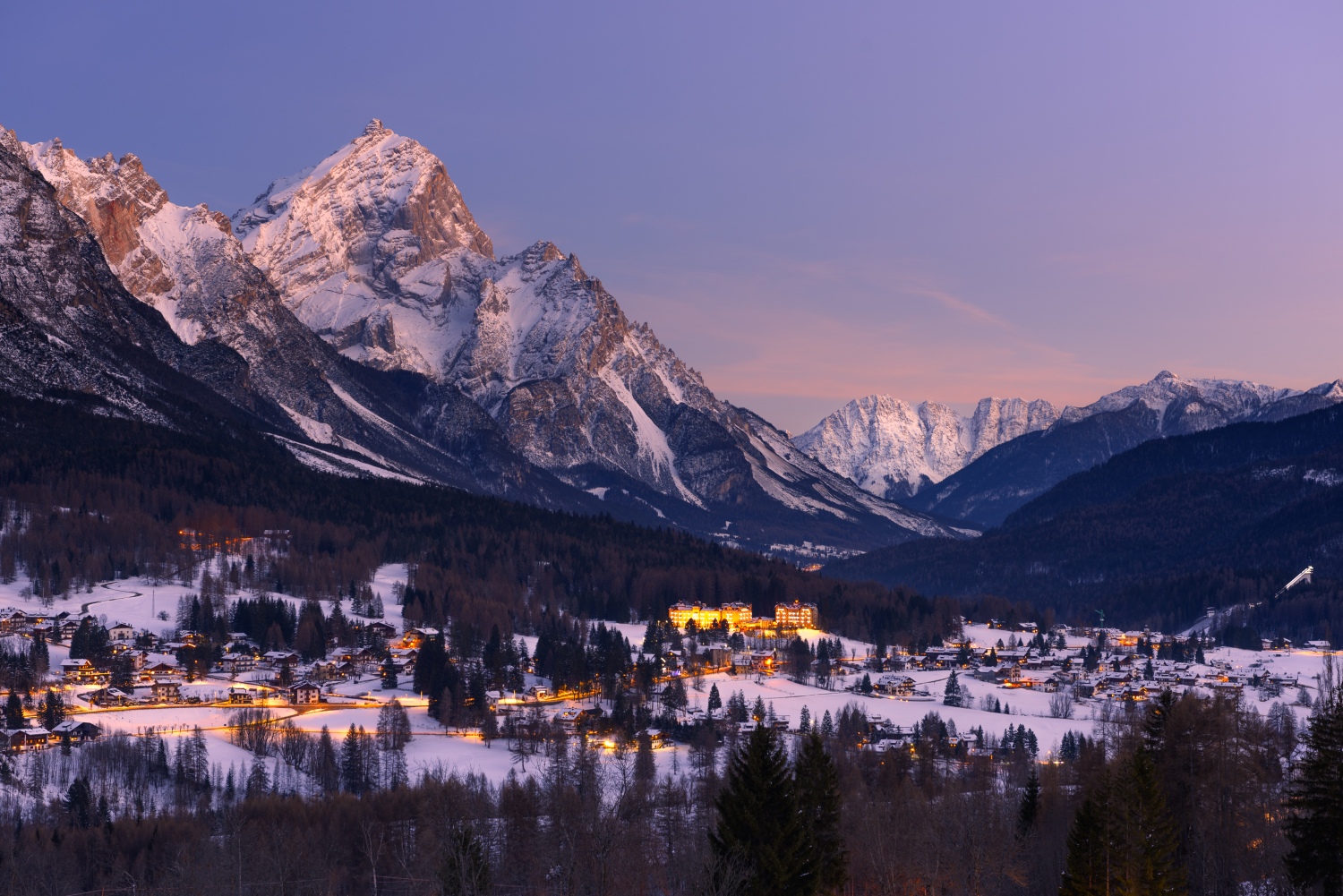
Cortina d'Ampezzo
Cortina, in the Ampezzo valley in the Dolomites, must be among the most beautiful ski resorts on the planet. You’ll be hard pressed to find more glorious landscapes to ski in, and the town is one of the oldest and most attractive ski villages in Italy. It's hardly surprising that Cortina has been chosen to host many of the key events of the 2026 Winter Olympics.
The ski resort is split into a number of separate ski areas, some of which aren't linked. The highest and most spectacular is Tofana, and the largest is Pomedes, both easily accessed by lifts up from town. Cortina is superb for first timers: the gently-angled runs of the Socrapes area on Pomedes are ideal. We also love crossing over to Cinque Torri and taking in the stunning Hidden Valley.
Cortina d'Ampezzo has plenty to offer in the way of off-piste skiing. The Val Orita is a lovely wide valley with 1,200m of vertical, while Sci 18 is one of the region's most famous backcountry routes. On Tofana's slopes, the Bus de Tofana is regularly hailed by local mountain guides as one of the best places to ski off-piste in the entire Dolomites range. Cinque Torri has some gentler slopes that are especially lovely after fresh snow - as with the of-piste a lot of Italy, you'll often have these runs to yourself
Down in town, the food is as epic as you'd expect from a traditional Italian mountain village - try Rifugio Averau, at Cinque Torri for a flavour of what we mean. If you need a down day, you can go window shopping along the cobbled, traffic-free Corso Italia – or hit the Olympic bobsleigh run if you're feeling adventurous!
Read our full ski resort review of Cortina d'Ampezzo for the complete lowdown on where to ski.
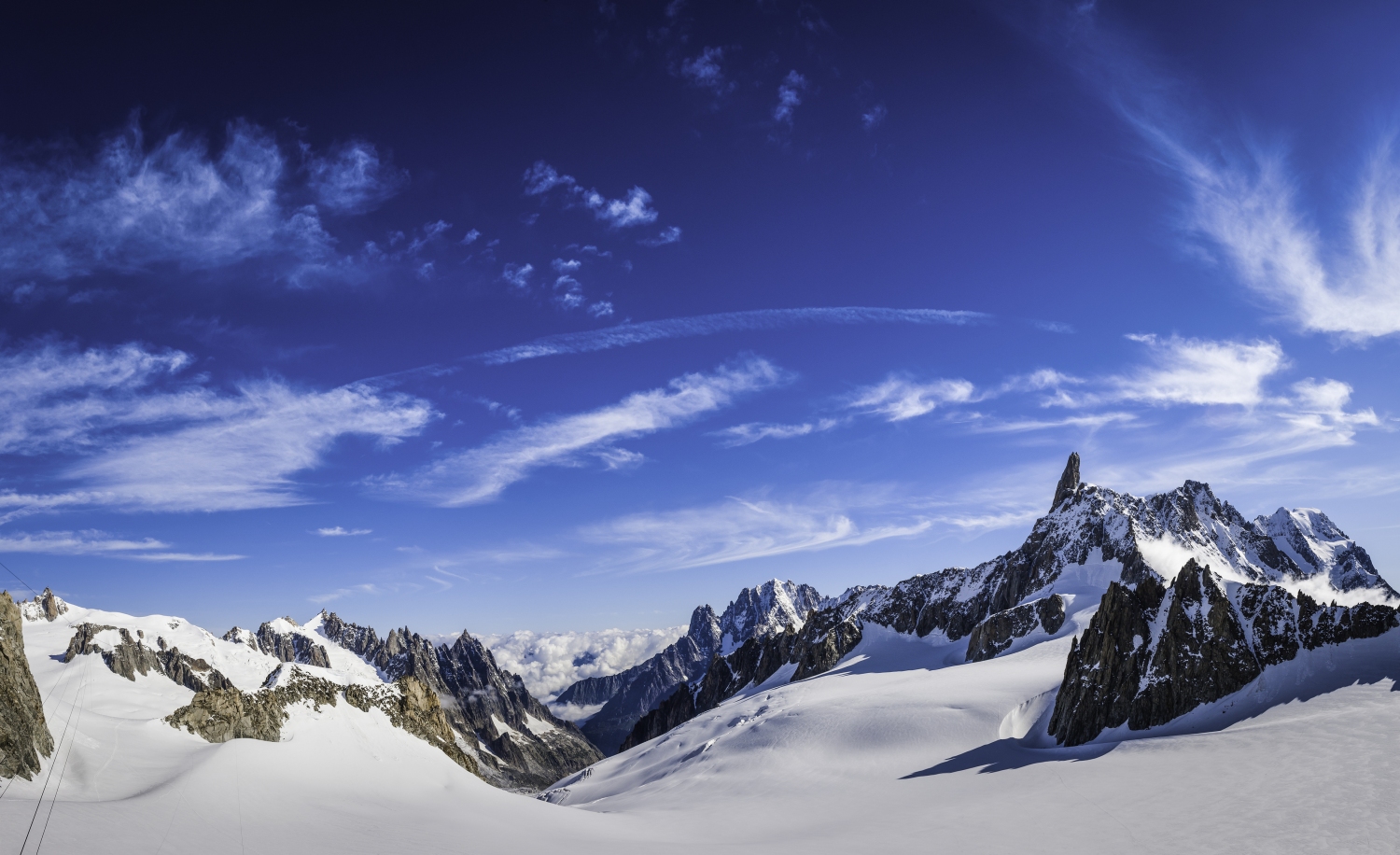
Courmayeur
Courmayeur is the classic Alpine resort, set amidst the impressive scenery of Italy’s historic Aosta Valley. Nestled at the foot of Monte Bianco (Mont Blanc), on the opposite side from the French town of Chamonix, this well-established mountain town retains much of its traditional character and offers a charming blend of old-world style and modern facilities, all in a stunningly beautiful setting.
When it comes to skiing in Courmayeur, most of the ski resort's runs are on straightforward open terrain above the tree line in the Checrouit sector, linked with the north-west facing forested slopes of the steeper Val Veny sector which offers spectacular views of Mont Blanc and its glaciers. There are no home-run pistes to Courmayeur itself, but there is a good long red down to the gondola base at Dolonne.
There are beginner areas at the top of the main lifts in both sectors, plus one at valley level in Dolonne, but the majority of the slopes are best suited to intermediates. Experts will inevitably head for the serious big-mountain off-piste terrain, over towards Chamonix, including the Vallée Blanche, or any of the less famous, but more technically demanding descents.
As with all the best ski resorts in Italy, après ski is by and large a civilised affair (especially when compared to skiing in Austria, for example). It's largely focused on the central quarter of the town, where some of the stylish café-bars and lounge-bars offer complimentary canapés with drinks – the Caffe della Posta is one of the best for this.
For the full lowdown, check out our Courmayeur ski resort review in full, here.
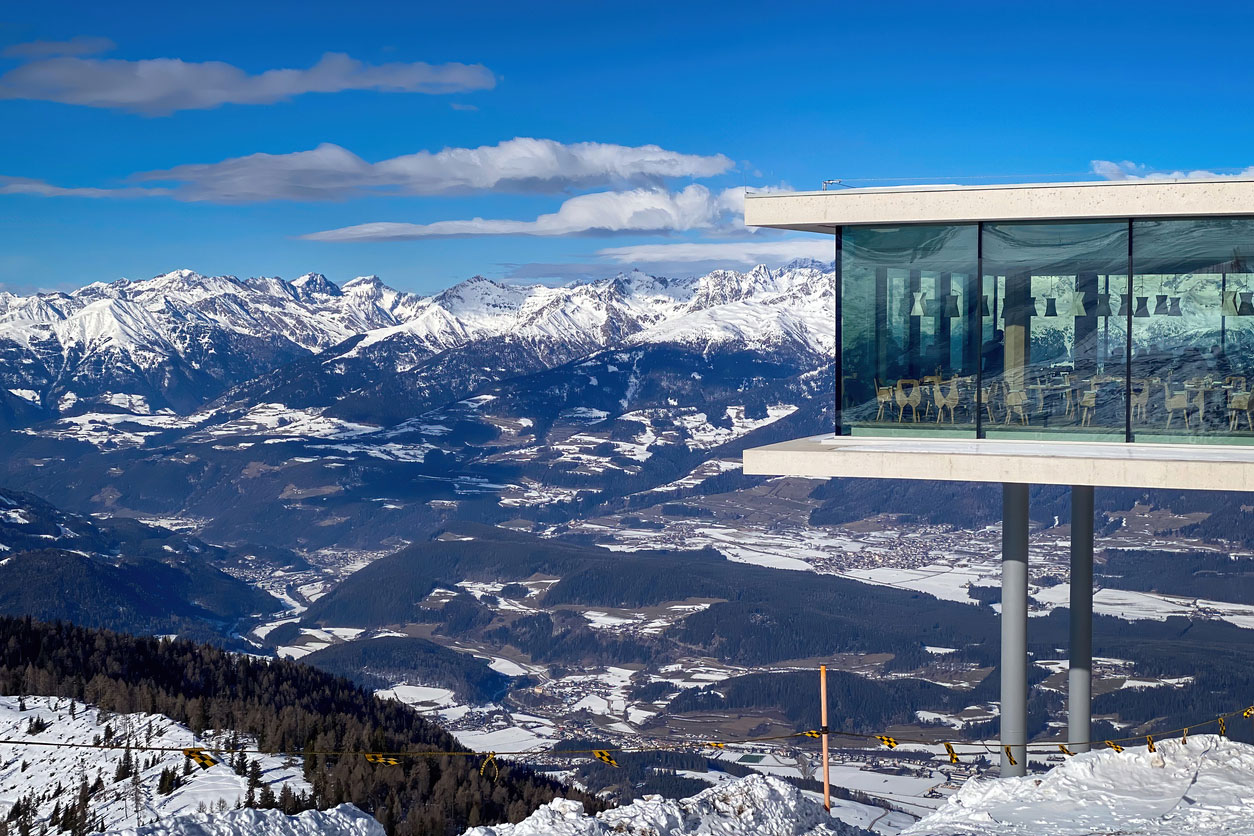
Kronplatz - Plan de Corones
Kronplatz, or Plan de Corones, as its known in Italian, is most famous resorts in Süd-Tirol, the German speaking area of Italy. By modern European standards it's not massive, with 112km of pistes. It's not particularly high either, with the highest lifts reaching just 2,275m. Instead its reputation was built on its history (the mountain was popular with ski tourers as far back as the 1870s) and its proximity to Bruneck (Brunico in Italian), one of the prettiest mountain towns in Italy—or indeed, anywhere in the world.
Kronplatz boasts super-modern lifts, which all converge onto a central crown at the top (hence the resorts' name). This configuration has made it simultaneously one of the best ski resorts in Italy for beginners and mixed groups (meeting up after lessons is a piece of cake) and one of the best places for on-slope après anywhere.
The five restaurants clustered around the summit all have tables spilling out onto the snow, and each offer something different. You can sip Aperol Spritz and enjoy the view from the AlpINN, or get stuck into the schnapps at the Rifugio Corones Hutte, where the après tunes start pumping from mid-afternoon onwards.
If you fancy mixing a little culture with your partying, there's a museum of Mountain Photography at the top, and a branch of the Messner Mountain Museum, founded by the legendary climber Reinhold Messner, and designed by the late "starchitect" Zaha Hadid. Both are well worth a visit.
The slopes are a good mix of beginner and intermediate friendly blues, greens and reds. And if you need more, you can always buy the Dolomiti Superski pass, which offers access to all the nearby resorts (including Val di Fassa, Val Gardena, Alta Badia and others on this list) with an incredible 1,200km of pistes.
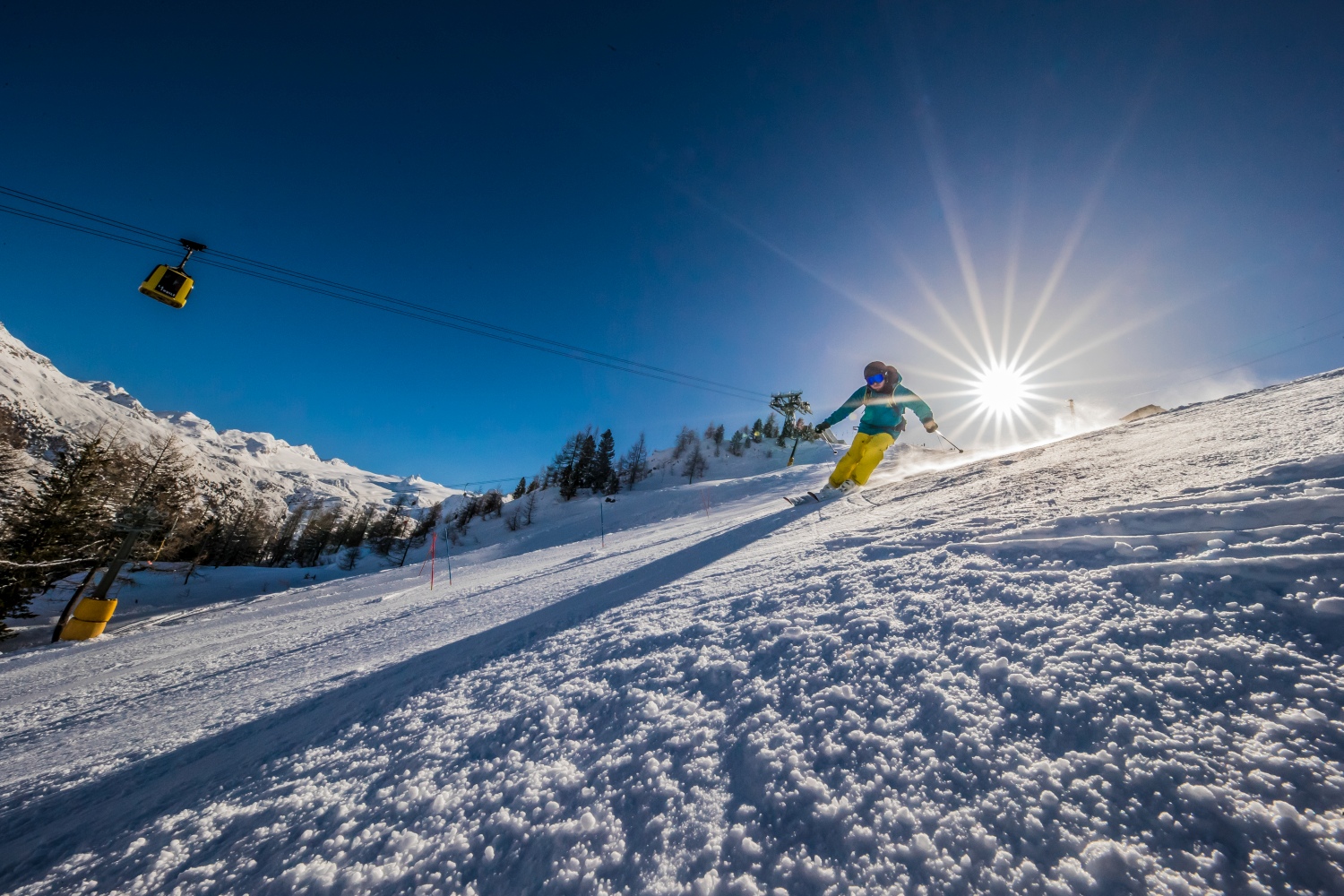
La Thuile
Perched near the top of the Aosta Valley, a semi-autonomous region in Italy's northwest, La Thuile often feels like a French resort. In part this is because it's linked to La Rosière (one of the best resorts in France) forming the cross-border ski area of Espace San Bernardo. But it also looks like a French resort, in that it's high altitude, with much of the architecture purpose built in the 1970s, and sounds like a French resort. French is the second official language in the Aosta Valley, so you'll often hear it spoken on the streets. And like the name of the village itself, many of the locals' names sound more French than Italian.
The one thing that consistently makes it obvious that you're not in France, are the prices, which are much more reasonable on this side of the border. The combined Espace San Bernardo ski area is fantastic, with 152 km of pistes served by 38 modern lifts. It offers plenty of variety: wide pistes that are ideal for intermediates, densely-forested slopes above the village that are great for powder days and high-altitude glacier skiing for those prepared to tour.
Beginners are catered for too, with nursery and blue zones near the base, though cruisey green runs are fewer than in typical resort resorts. La Thuile’s village vibe is refreshingly low-key: there's no Folie Douce or mad après scene here, there are fewer queues, and the whole thing is terrific value compared to the big names across the border in France.
Read our full resort review of La Thuile for more info, and tips on where to book.
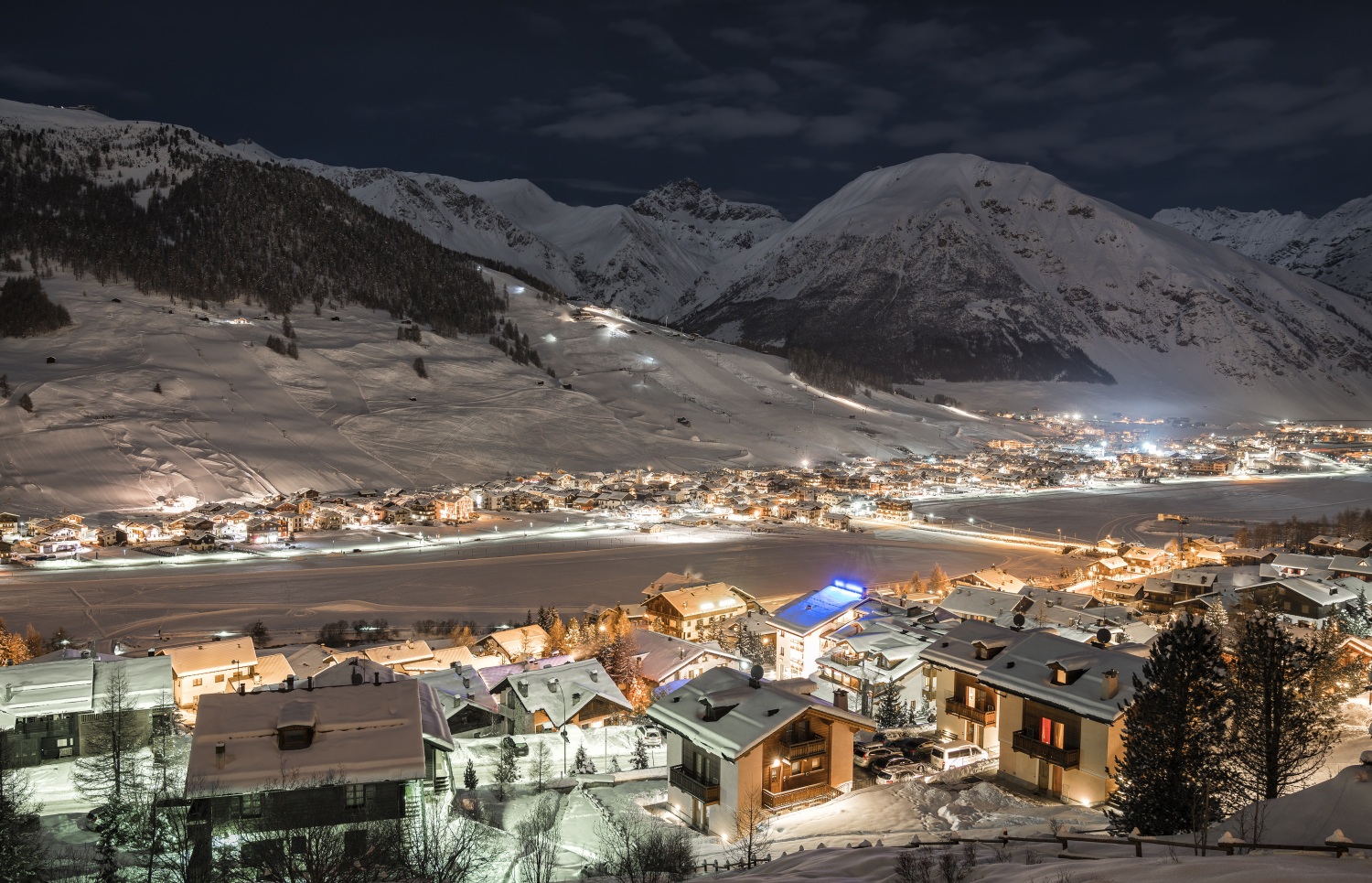
Livigno
Tucked away on a high alpine plateau, and known colloquially as "Piccolo Tibet" (or Little Tibet) Livigno's location has given it two crucial advantages. The first is that it's snow sure, with a long season that lasting from late November well into May. The second is that the whole village is duty free, making après, alcohol and cigarettes significantly cheaper than they might be otherwise.
The town's tax free status dates back to the 16th Century, when rulers were eager to tempt people to live here because of its strategic importance as a border region, and worried that the difficulty in getting there in winter made it unappealing.
These days, getting to Livigno still involves a significant transfer time, but there's no danger of the destination lacking appeal. There are two large, separate ski areas, one on either side of the broad, gently sloping valley: the biggest is Costaccia-Carosello 3000, whose gentle base-area slopes spread out along almost the entire western edge of the resort; the other is the Mottolino area to the east.
The majority of Livigno’s pistes are middling reds, with a couple of short black runs; the pick of the runs are the long descents from the Carosello sector down to the base area at San Rocco. There are plenty of beginner slopes scattered around the resort and good blues to progress onto, making this an excellent destination for beginners and intermediates.
But there's also plenty here for advanced skiers and snowboarders to sink their teeth into. The Mottolino side of the mountain is home to the best snowpark in Italy, and one of the best in the Alps, which will host the freestyle events at the Milano Cortina 2026 Winter Olympics. There's plenty of off-piste to explore too, and the resort even allows heliskiing.
The village is made up of three original hamlets: Santa Maria, San Antonio, and San Rocco, now rolled into one resort that stretches for around 4 km along the flat valley, with ski areas on either side. If you can tear yourself away from the duty-free shops, there are some lively bars to choose from, including Daphne’s Pub and Helvetia, all of which benefit from the VAT free prices. Eating out is good value too - and as tasty as you'd expect anywhere in Italy.
Read our Livigno ski resort review for the full lowdown.
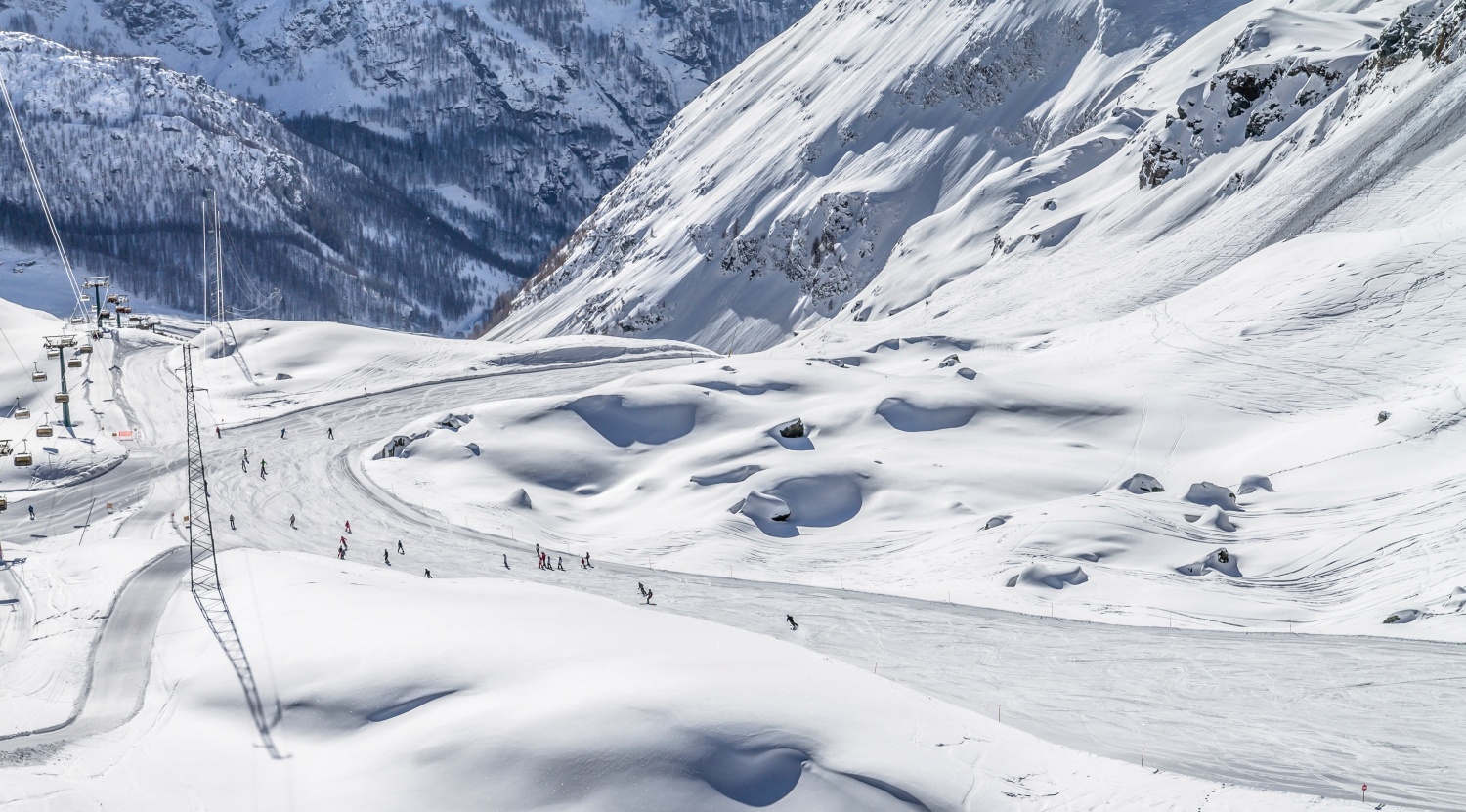
Monterosa
Monterosa could make a case for being Italy’s 'Trois Vallées’, given that its' made up of three lift-linked resorts in three adjacent valleys. But unlike the French version, these are hidden gems, still charmingly unspoilt, with some glorious skiing on and off-piste and very few crowds.
Monterosa has three main resort villages – Champoluc, Gressoney-La-Trinité and Alagna – one in each of the three valleys. All share the same network of lifts and the same friendly, small-scale, rustic Italian ambiance. Champoluc is the largest and makes the best base; Gressoney, in the middle, is a quiet little village; and Alagna is smaller still and more remote.
These ski resorts may seem relatively small in the sense that there aren’t a lot of pistes, but if you ski all three valleys you’ll clock up some decent mileage. Open slopes dominate and intermediates will find plenty to love. More timid skiers will want to avoid the Goat – a steep, narrow and bumpy red descent into Champoluc. Alagna remains a haven for expert skiers, as the village sits beneath the Punta Indren glacier, one of the world’s greatest lift-served verticals (1,759m) skiable by many off-piste descents. Heli-skiing is also available - which you obviously can't do if you're skiing in France.
From Gressoney, lifts stretch up on either side to reach trails back down to Champoluc on one side and Alagna on the other. Runs of all standards descend on either side and back down to the resort.
When it comes to food and drink, Monterosa is - you guessed it - excellent, and excellent value. The ski area is blessed with some good value mountain restaurants – try the wild boar at Punta Jolanda above Gressoney for a flavour. Après ski is quite mellow: the Bistrot and the Atelier Gourmand near the Champoluc gondola base are cosy, but the restaurants in any of the villages are world-class. If you're looking For family fun, Gressoney and Champoluc have ice rinks.
Learn more about the Monterosa ski area in our resort guide.
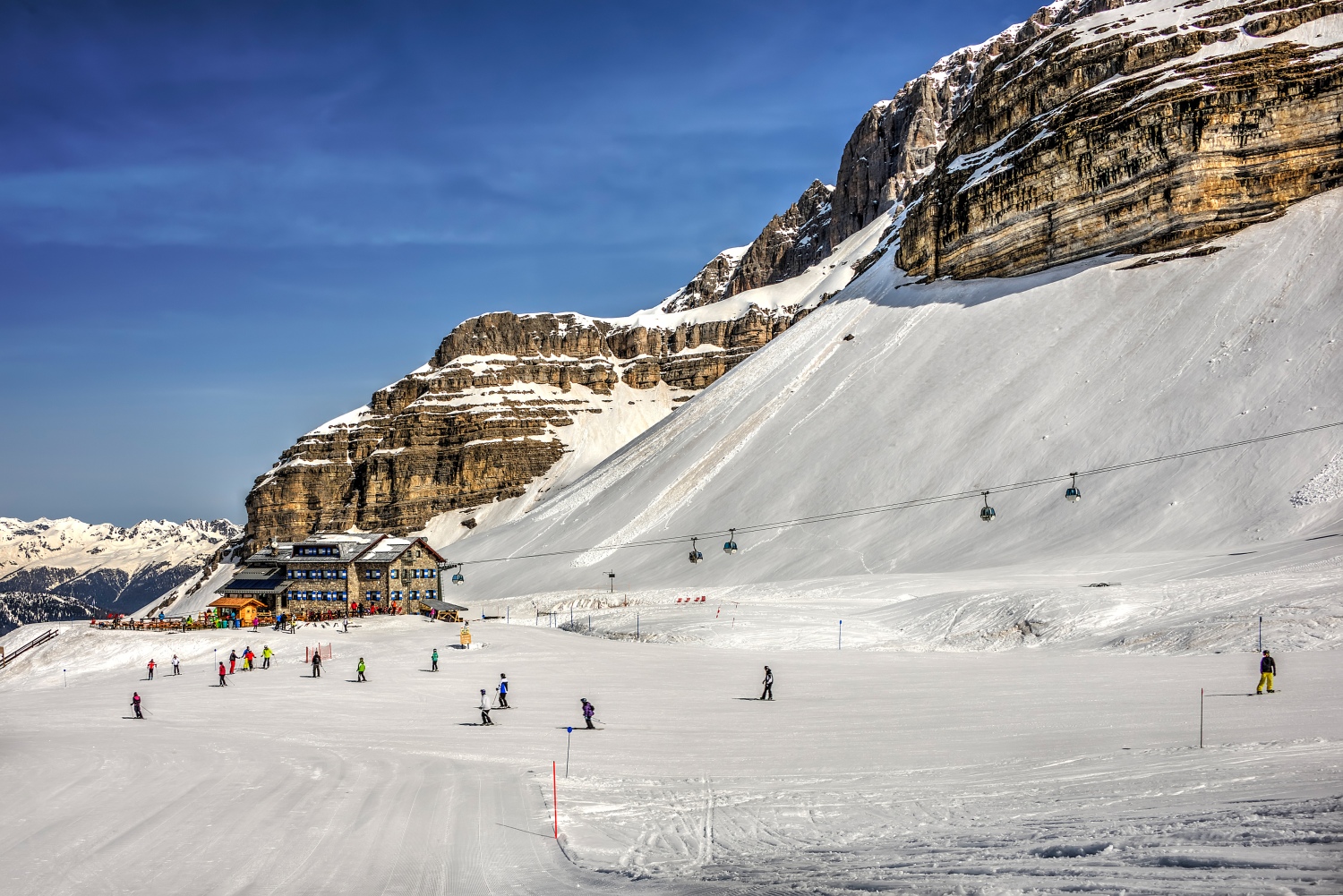
Madonna di Campiglio
Madonna di Campiglio manages to be simultaneously one of the largest ski resorts in Italy in terms of skiable area, and one of the least spoilt. The lifts rise out of a picturesque village located on a spur of the Val di Sole - the sunny valley - accessing around 150km of pistes.
The runs are largely cruisey blues and reds, and there is plenty for intermediate skiers to enjoy here - particularly up the Pradalago side of the mountain. There are a decent proportion of trails marked as blacks too, but they're perhaps not as challenging as those you'd find in a resort with more vertical, like Verbier or Chamonix.
The Ursus Snowpark at the top of the Passo Groste lift, is immaculately sculpted and well maintained, but expert skiers and snowboarders will perhaps find the limited accessible off-piste terrain slightly frustrating. However, the nearby ski resort of Passo del Tonale, accessible on the same Superskirama liftpass, boasts lifts that will carry you up to 3,000 metres and some of the best ski touring terrain in the Dolomites if you need to scratch that freeride itch.
Our favourite thing to do in Madonna, however, is simply cruise around the uncrowded pistes taking in the scenery. The towering red rock spires of the Dolomiti di Brenta are some of the most picturesque mountains you'll see anywhere on the planet. This, combined with the plethora of brilliant slopeside restaurants, makes this one of the best ski resorts in Italy for family holidays.
Down in town, the culinary excellence continues, and while the prices aren't astronomical, especially when compared to France, wealthy Italian stereotypes abound - expect to see plenty of women in fur coats and Gucci sunglasses, carrying tiny dogs whose attire is scarcely less expensive than their own.
Find out more about everything Madonna di Campiglio in our full resort guide.
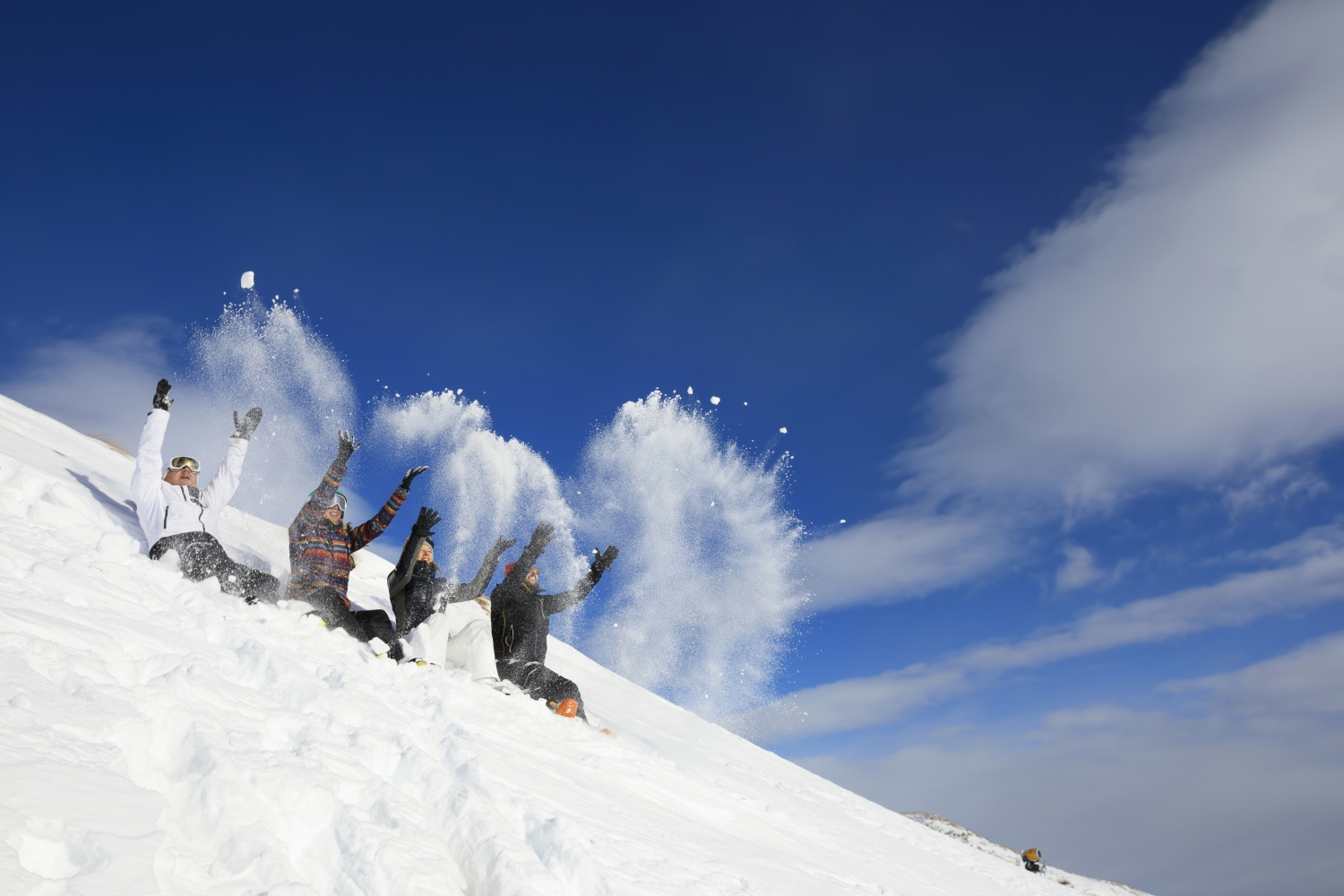
Passo Tonale
Although it's smaller—in terms of kilometres of piste—than many of the Italian ski resorts on this list, Passo Tonale punches well above its weight when it comes to skiable terrain and quality of snow. Largely, this is thanks to the altitude. The resort itself is a ribbon-like settlement which runs along the Tonale pass, 1,800m above sea-level, while the highest gondola tops out at 3,000m, making this one of the highest resorts in Italy, and putting it in the same ball-park as alpine giants like Val d'Isère, one the best ski resorts in France. But the resort also offers an impressive amount of variety, especially when taken as a whole alongside its lift-linked neighbour, Ponte di Legno.
It's one of the best resorts in Europe families or mixed-ability groups, who might want to ski separately for parts of the day, before meeting up for lunch or après, as its compact size means you're never too far from anywhere.
The main road through the resort runs west to east, linking the regions of Lombardia and Trentino. On the north side, the slopes are all mellow reds and blues, whose south facing, sunny aspect, and modern chairlifts are perfect for beginners and intermediates. To the south, the 3,069m peak of Cima Presena dominates the skyline. The steep slopes down its northern flanks are home to some excellent black and red runs, and also provide a plethora of excellent off-piste routes, which tend to hold snow well after a snowfall, thanks to their aspect and the presence of the Presena glacier beneath the summit. This makes it one of the best ski resorts in Italy for more experienced skiers too.
While the town itself is not the prettiest (it looks like a mini-Tignes, complete with its own ill-advised 1970s tower blocks) there are lots of great restaurants to suit every budget, and a couple of decent bars too. The place also has a fascinating history—until the First World War, Trentino was part of the Austro-Hungarian Empire, so this pass marked the border. As the war memorials up on the glacier and in the centre of town show, these mountains were the site of pitched battles. There's a tunnel you can visit halfway up the Cima Presena which once served as a shelter for soldiers, and the town of Vermiglio, on the Trentino side, is home to a fascinating museum which tells the story of the fighting, and displays shells, rifles and other relics that have melted out of the glacier over the years.
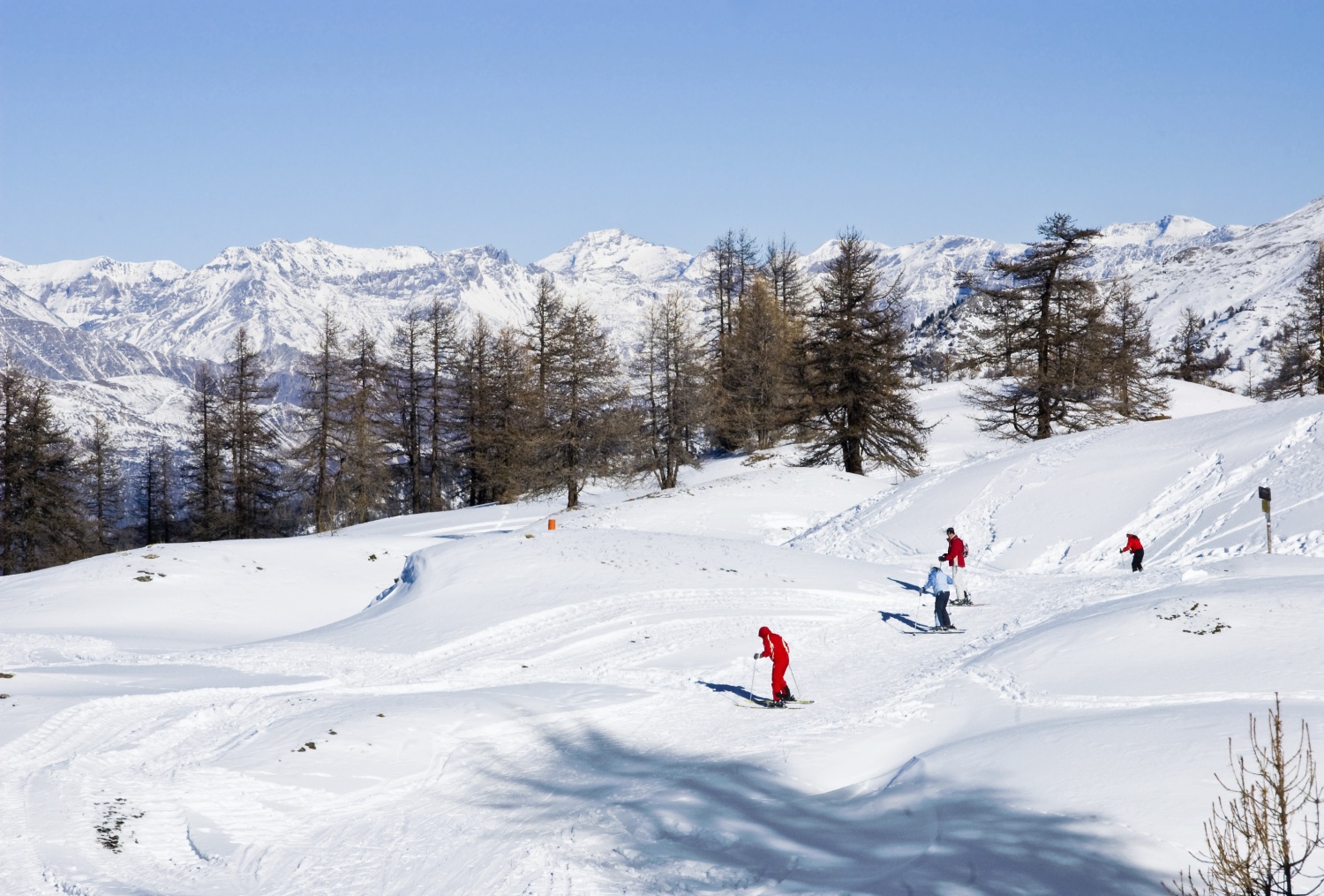
Sauze d'Oulx
In the 80s and 90s, Sauze d'Oulx had a slightly cheap-and-cheerful reputation as a party destination—a sort of Andorra in the Alps, beloved of a boozy British crowd. Those days are long gone, however. And while there's still decent nightlife to be found, this days the resort caters primarily to an older, classier clientele, and has become one of the best ski resorts in Italy for families.
The slopes around the resort itself are perfect for intermediates—long, flowing, reds and blues snake their way down from the ridge above town through the trees. The Moncrons sector is particularly good for cruisey runs. But there's plenty to entertain more experienced skiers here too, with testy blacks both at Moncrons and Genevris.
Sauze d'Oulx also sits on the northern edge of a much larger lift-linked ski area, the Milky Way (Via Lattea, in Italian) which offers 400km of lift-linked pistes, for those who really want to get the miles into their legs.
An attractive old town in the centre of the village features lovely restaurants serving traditional Italian fare. And while the resort isn't the highest, or the most snow sure, its proximity to Turin makes it a great option for shorter breaks.
Read our full Sauze d'Oulx resort guide for more info on one of Italy's most family friendly ski resorts.
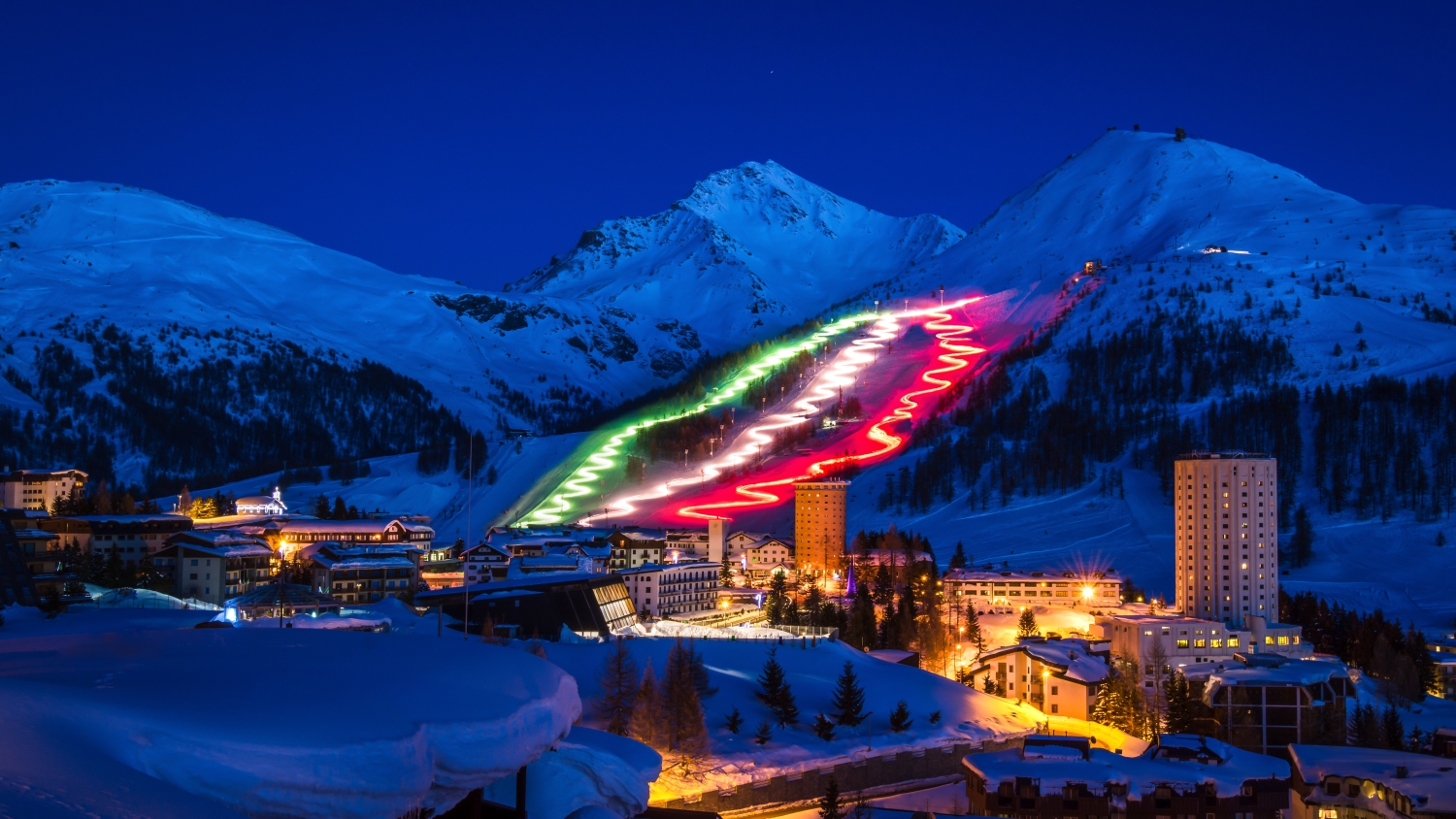
Sestriere
The highest-altitude ski resort in the extensive Milky Way linked area, which straddles the French-Italian border, this is one of the best ski resorts for beginners and intermediates. Founded in the 1930s, Sestriere was one of the world’s very first purpose-designed ski resorts, created by Fiat’s Giovanni Agnelli. Offering access to a frankly incredible 400km of lift-linked pistes, Sestriere is still arguably the most upmarket resort in the Milky Way (if not the galaxy).
Sestriere’s local ski area has two distinct linked sectors: Monte Sises, directly overlooking the town, and Monte Motta, above the linked village of Borgata to the east. The spacious snowfields at the foot of Monte Sises are mostly for beginners and are served by a number of short ski-tows. Head to the upper slopes of Monte Sises to ski the World Cup and Olympic slalom piste. Head to the upper reaches of Monte Motta to ski long red and black summit-to-valley descents, among them the historic ‘Kandahar Banchetta’ World Cup and Olympic downhill course. A gondola west of the village links to the Milky Way, via Sauze d’Oulx.
Weekday evenings are normally very low-key. But when Friday comes, so does Turin, and things perk up. One of the best early après ski bars is Pinky’s; it’s also a great pizzeria, so expect to stay put once you get comfy here.
Read our full ski resort review of Sestriere.
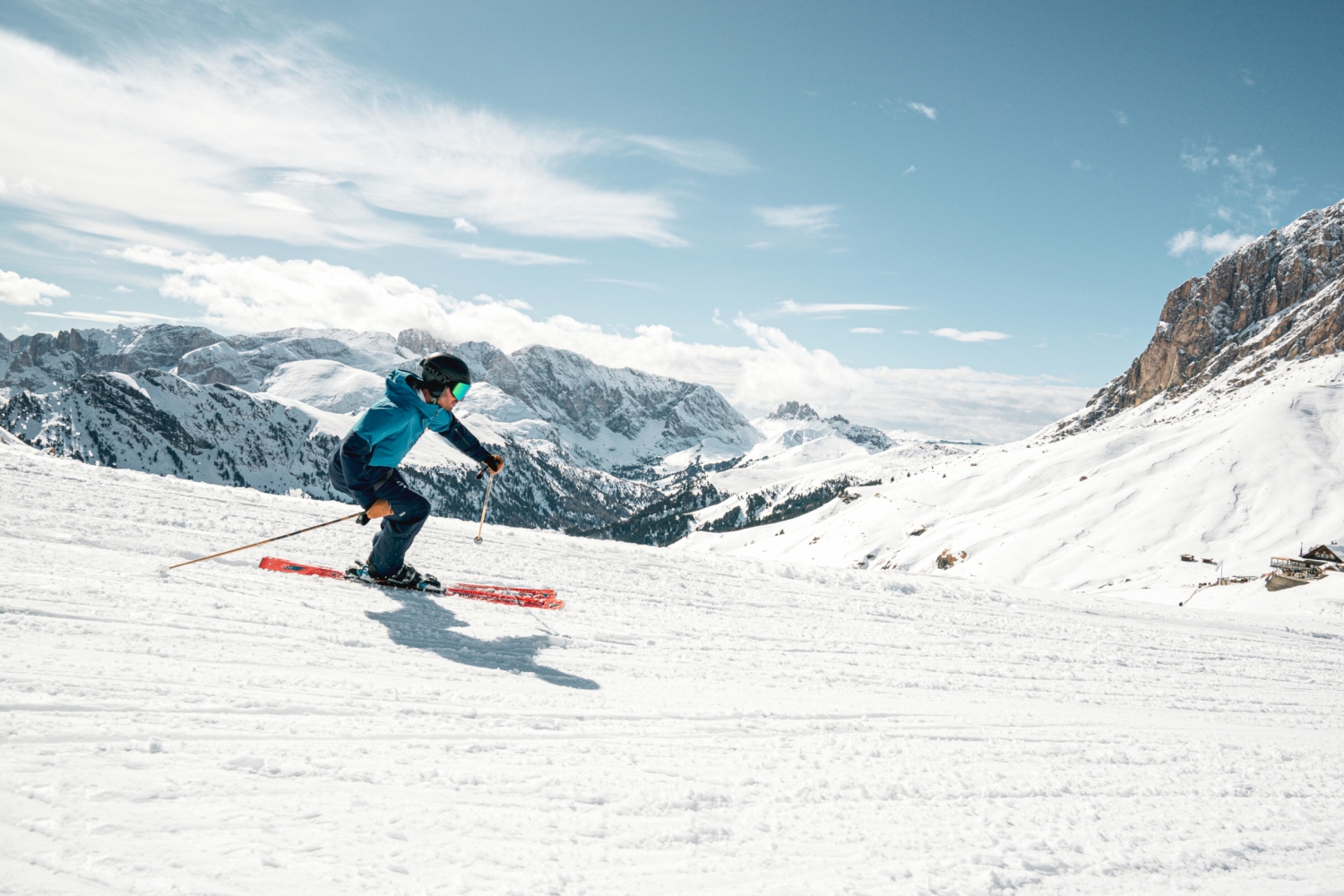
Val di Fassa
It's a big claim given that the whole area is a UNESCO World Heritage site, but we reckon that of all the Dolomiti Superski areas, Val di Fassa probably offers the most beautiful views. Spiky spires of red, Dolomitic rock rise vertically from tree-covered hillsides on either side of this stunningly picturesque valley. The area is made up of seven individual villages: Canazei, Campitello di Fassa, Mazzin, Moena, Pozzo di Fassa, Soraga di Fassa and Vigo di Fassa, which are linked to each other, and the wider Dolomiti Superski area by a network of modern, high speed chairlifts.
The slopes are mostly reds and blues, making it an ideal destination for intermediates who want to get their piste miles in. As with most of the ski resorts in Italy, they're covered by an extensive network of snow cannons, so even when there's shortage of natural snow, you're still guaranteed to have plenty of mileage.
When the powder does fall, there's plenty of off piste to explore too—strap on your touring skis or splitboard and head up the Val San Nicolò, where there are enough north facing bowls, couloirs and tree runs to last a lifetime. There are also two typical refuges which stay open for snowshoers and ski tourers, so you can warm up with a bombardino or a glass of grappa after an epic descent.
Each village has its own unique characteristics, but they're united by speaking Ladin—a language that's far enough away from Italian to be classified, not as a dialect, but as a separate tongue entirely. There's a fun, interactive museum of Ladin culture in Pozza di Fassa to explore on down days.
Read our full Val di Fassa resort guide for more information on this unique valley and its resorts.
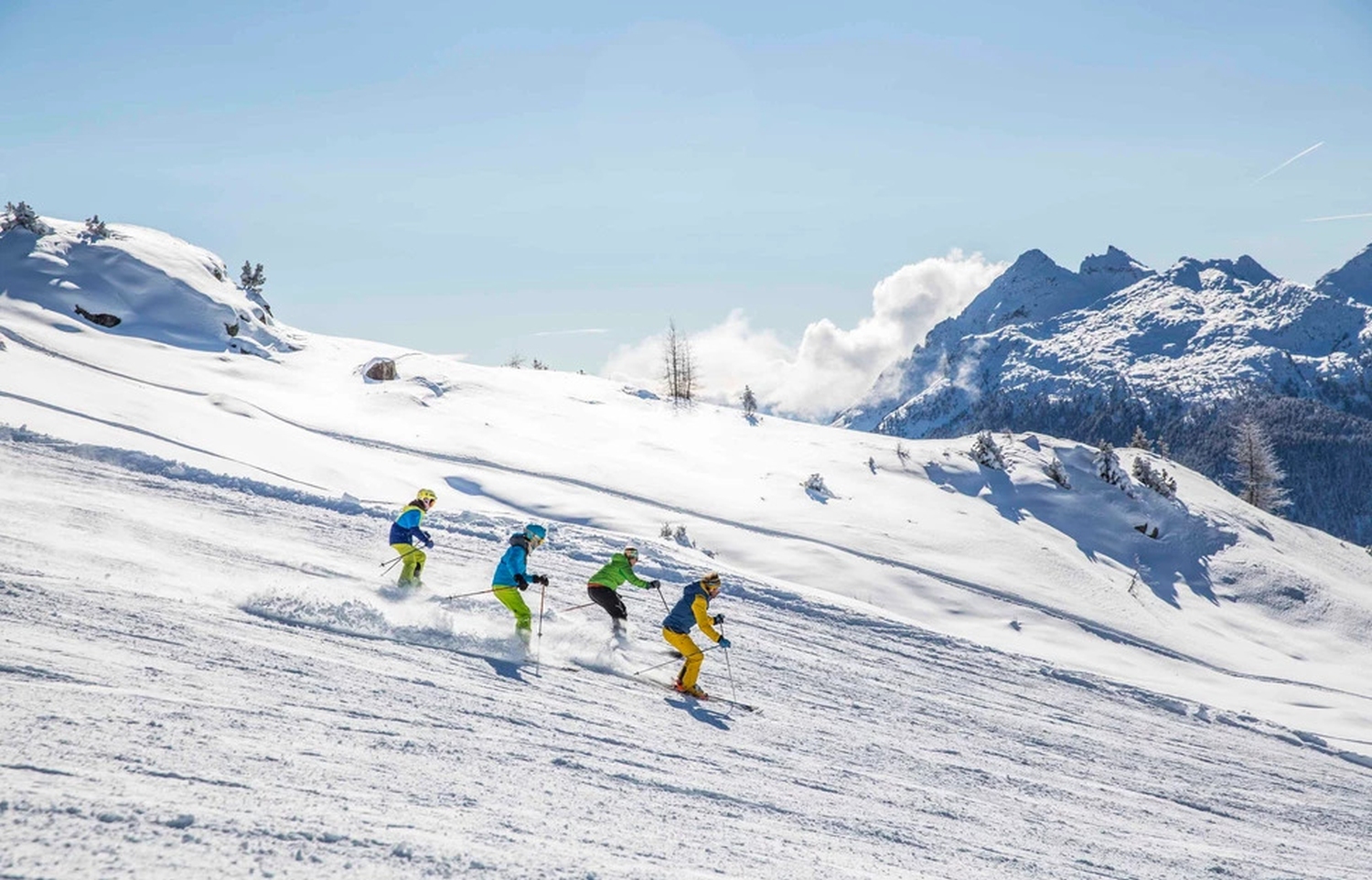
Val di Fiemme
Just around the corner from Val di Fassa, lies the quieter, less touristy Val di Fiemme. Like its more famous cousin, the Fiemme Valley is part of the vast Dolomiti Superski area, but perhaps because they're not part of the Sella Ronda circuit, the valley's five separate ski areas tend to be much less crowded than Dolomiti Superski's other ski resorts. Yet Alpe Cermis, Latemar, Alpe Luisa, Passo Rolle and Oclini have much to offer—especially for families, who may appreciate their quieter slopes.
The ski areas themselves consist mostly of blue and red runs, with plenty of gentle cruisey pistes which cut between trees. But Latemar boasts one of the best snowparks in the Dolomites at Obereggen, which has rails and kickers of all sizes, and even a halfpipe.
The five ski areas are accessible from a number of different villages, including Moena (which is technically part of the Val di Fassa). All are charming Italian ski resort communities, with the Austrian-inflected architecture that tells you you're close to the border. Two of them, Predazzo and Tesero, will host events for the Milano Cortina Winter Olympics in 2026—the ski jumping and the cross country skiing, respectively.
If you're looking for a few more facilities, base yourself in Cavalese, the largest of the towns in the area. It's connected directly by cable car to Alpe Cermis, but has a wider choice of restaurants, and bars than some of the smaller ski villages. Check out the gorgeous sauna facilities at the new Alpuris Hotel if you want to really kick back and relax.

Val Gardena
Val Gardena is one of Italy’s most beautiful and best-connected ski resorts, offering access to the vast Dolomiti Superski area and the famous Sella Ronda circuit. The valley links three charming villages—Ortisei, Santa Cristina and Selva di Val Gardena—each with its own character but all sharing the same blend of Italian flair and Tyrolean charm, mixed in with traditions from the local Ladin-speaking community—Ladin being the unique language that's only spoken in the Dolomites.
The skiing here is perfect for intermediates, with immaculately groomed pistes, and mile-after-mile of rolling reds and scenic blues winding beneath the towering spires of the Sassolungo Group. More advanced skiers can test themselves on the legendary Saslong World Cup downhill run, while powder hounds can explore guided descents from the Forcella Mezdì or the Val Lasties.
Food, as ever in Italy, is a highlight: mountain huts are known for turning out restaurant-quality dishes and fine South Tyrolean wines at reasonable prices. Après ski is low-key but stylish. It's more about sipping Aperol Spritz and listening to live jazz than table-dancing in ski boots.
With its stunning scenery, extensive linked terrain, and blend of culture and cuisine, Val Gardena ticks every box for a classic Italian ski holiday — and does it all with effortless elegance.
Read our full resort review of Val Gardena for more details.
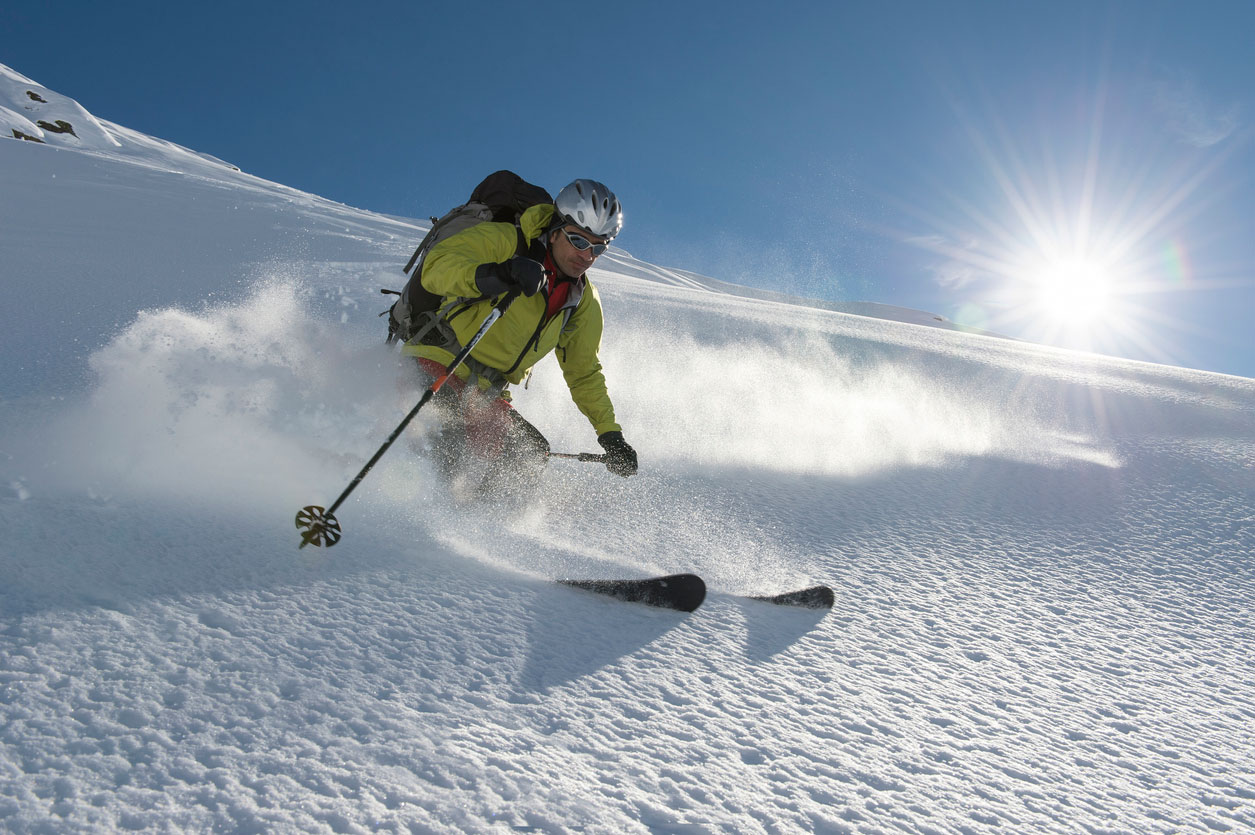
Val Senales - Schnalstal
Along with its many charms, Val Senales has two unusual claims to international fame. Firstly, it's home to the highest hotel in Europe—the Glacier Hotel Grawand, where you can sleep at 3,212m above sea-level. And second, it's the place where, in 1991, hikers found Otzi, the oldest mummified human ever discovered, whose remains had been perfectly preserved in a glacier for over 5,000 years.
As those two facts indicate, Val Senales, aka Schnalstal, in Italy's German-speaking Süd-Tirol region, is high. Very high. The base station sits at over 2,000m and the highest lift—a recently rebuilt cable car which finishes next to the Glacier Hotel Grawand—carries skiers to 3,250m. This makes it snow sure, and means there's a long season, with lifts often running from November to May.
The ski area has a bit of everything, from excellent beginner slopes to seriously challenging off-piste itineraries. But it's great for families visiting early or late season, as it's relatively compact, making lunchtime meet-ups easy after mornings spent in ski school.
The village is relatively quiet, with a few 70s modernist hotels, rental shops and restaurants clustered around the base of the lifts. Like the Austrian glacier resorts just across the border (Stubai, Hintertux and the like) lots of people choose to stay further down the valley and drive or catch a bus up. If you're looking for a wild après scene, you'd be better served by other resorts on this list. But if you're here for the skiing, Val Senales ticks a lot of boxes.


